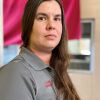Over the past few years, I have noticed a trend in the EMT students that come ride on the ambulance with me for their clinical hours.
I am not the type of person to stick a student in the corner and only speak to them when we run calls. Oh, no – if you come ride with me, we’re going to learn things. It’s my responsibility to you as a preceptor to ensure you get the most benefit out of your time, and sitting in the corner staring at your phone, or even at your textbook, is not going to accomplish that. We will discuss medications, pathophysiologies, anatomy, basic etiologies and other things. We will discuss every call we run. And it’s not a one-way street; I learn things from my students, too.
Unfortunately, the trend that I’ve noticed is that our EMT students are being taught when and how and what to do for patients, but they are not being taught why to do things. If you don’t know why you’re doing something, can you really be 100% certain that what you’re doing is the best thing for your patient?
Establishing a strong clinical foundation
I am focusing on EMT students because it seems the further advanced EMS certifications get, the why suddenly becomes important. I’d argue that it should be a high priority from the very start. Establishing good habits from the beginning at a foundational level promotes good habits throughout one’s career. If you want strong medics, it helps to begin as a strong EMT.
How are we going to grow strong EMTs if all we focus on teaching them are skills and how to pass the test? Sometimes, we don’t convey how important BLS is to our EMT students.
I prefer to have an EMT as a partner. I have run plenty of calls where my EMT partners have noticed or suggested something I had missed because I was thinking on a medic level. EMTs and paramedics sometimes see situations differently, and in my opinion, the combination of a paramedic and an EMT can provide more well-rounded care for our patients.
BLS interventions and medications aren’t BLS simply because they are the easiest and safest to give; they are BLS so the most common life-threatening emergencies can be treated more promptly without having to wait for a higher certified provider to arrive. BLS is the groundwork for all prehospital emergency medicine.
Cause and effect
We need to push past the “cookie cutter” medicine mindset, and start teaching our students to think about why they are doing what they’re doing. And the best way I can think to accomplish that is to instill a love of medicine in these students. Let’s stop telling war stories in class, and start explaining cause and effect. Or – because let’s be honest, at least a few war stories are going to get told – let’s start tying them into our lessons.
“I almost gave this medication to this patient because they were complaining of this, but I noticed something didn’t add up with their vitals/diagnostics/etc., and it turned out that medication could have been really detrimental for that patient. This is how I treated them instead.”
Medicine is fascinating. Physiology is amazing. Why are we allowing our students to miss out on the wonders of the way the human body works? It is incredibly rewarding to see a student “get it,” as they realize why something works the way it does, or why we perform certain interventions.
Absolutely anyone can learn a skill. EMT students are going to learn the skills just
fine. I can grab a bystander on the scene of pretty much any call and teach them a skill. Do EMT students need to learn them? Yes. Do we need to spend four months, or six, or however long their program is focusing solely on those skills? Absolutely not.
Let’s first teach our students to enjoy learning the why, and the importance of it, and then build on that with the when, what and how.
The argument can be made that it is the student’s responsibility to study and to put the work in to learn the material, and that is correct, to an extent. But there is still a responsibility to guide the students, to create an environment for growth and learning, and to provide the best possible opportunity for their success.
Improving EMT education
All of this being said, there are some solid EMT classes and exceptional EMS instructors who do strive to accomplish this. But it has been enough of a trend within my region to give me cause for concern, and just maybe this will start some discussions about what we can do to facilitate better education for our future EMTs, including considerations such as:
- Should college-level pathophysiology classes be required before EMT school as it is for most paramedic schools?
- If so, should EMT classes no longer be taught in high school, as it requires
a higher level of biology? - Should the duration of programs be adjusted to allow more time for
learning the “why” of what we do? - Are NREMT requirements too easy?
These may not be easy questions to answer, and certainly involve challenges, but I think they are questions that need to be answered to allow for growth in what should be an ever-evolving profession. We need to start seeking out solutions to provide the best chances of success for our students and, keeping the big picture in mind, to provide an environment in which our successors are providing consistent, optimal patient care.
Read next:
What skills should we test?
A simple framework for an EMT skills competency portfolio














